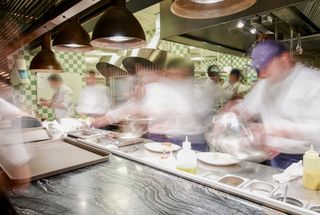US restaurant and foodservice sales will finally exceed the 2019 level

US consumers are spending more on high-end hotels and restaurants, according to the American Express first-quarter report (Demos, 2022). Reservations in the company’s Resy restaurant-booking service jumped 16% from February, making March the busiest month ever for Resy.
The NRA projected sales at $898B in 2022.
The National Restaurant Association (NRA) released the 2022 State of the Restaurant Industry report earlier (Ruggless, 2022). NRA projected that total restaurant and foodservice sales would reach $898 billion, slightly exceeding the $864 billion level in 2019. In 2020 and 2021, the industry reported annual sales at $678 billion and $799 billion, respectively. Although, after adjusting the inflation, foodservice sales in 2022 would still remain 11% below the pre-pandemic level, such a growth shows a very healthy trajectory for the industry.
The pandemic has substantially changed restaurant operations.
The 2022 State of the Restaurant Industry report (NRA, 2022) also highlighted some noteworthy trends regarding operations, food & menu, and the workforce. For example,
- About 50% of operators believe outdoor dining will become more common, a trend also reported in this magazine’s April issue.
- 54% of adults (or 72% of millennials) believe takeout or delivery services are essential.
- 96% of operators experienced supply chain delays or shortages in recent months, resulting in 80% of full-service and 2/3 of limited-service operators changing menu offerings.
- 90% of operators reported a higher food cost (as a percent of sales) than before COVID-19.
- The industry added 1.7 million jobs in 2021, but 70% of operators reported not having enough staff to support the service.
- The projected jobs in the industry will reach 14.9 million, still at 0.5 million below the 2019 level.
The industry is taking action to respond to such changes.
Many operations made significant changes to become more resilient to the supply-chain and labor-shortage challenges. Some invested in locally grown, fresh, packed, and retail-style food options and expanded their off-premises offerings. Others gained a competitive edge by adopting new technology to build stronger customer relationships and lower labor costs.
What will you recommend to the restaurant and foodservice operators to help them stay competitive in the market?
Linchi Kwok
Professor at The Collins College of Hospitality Management, Cal Poly Pomona
CAL Poly Pomona